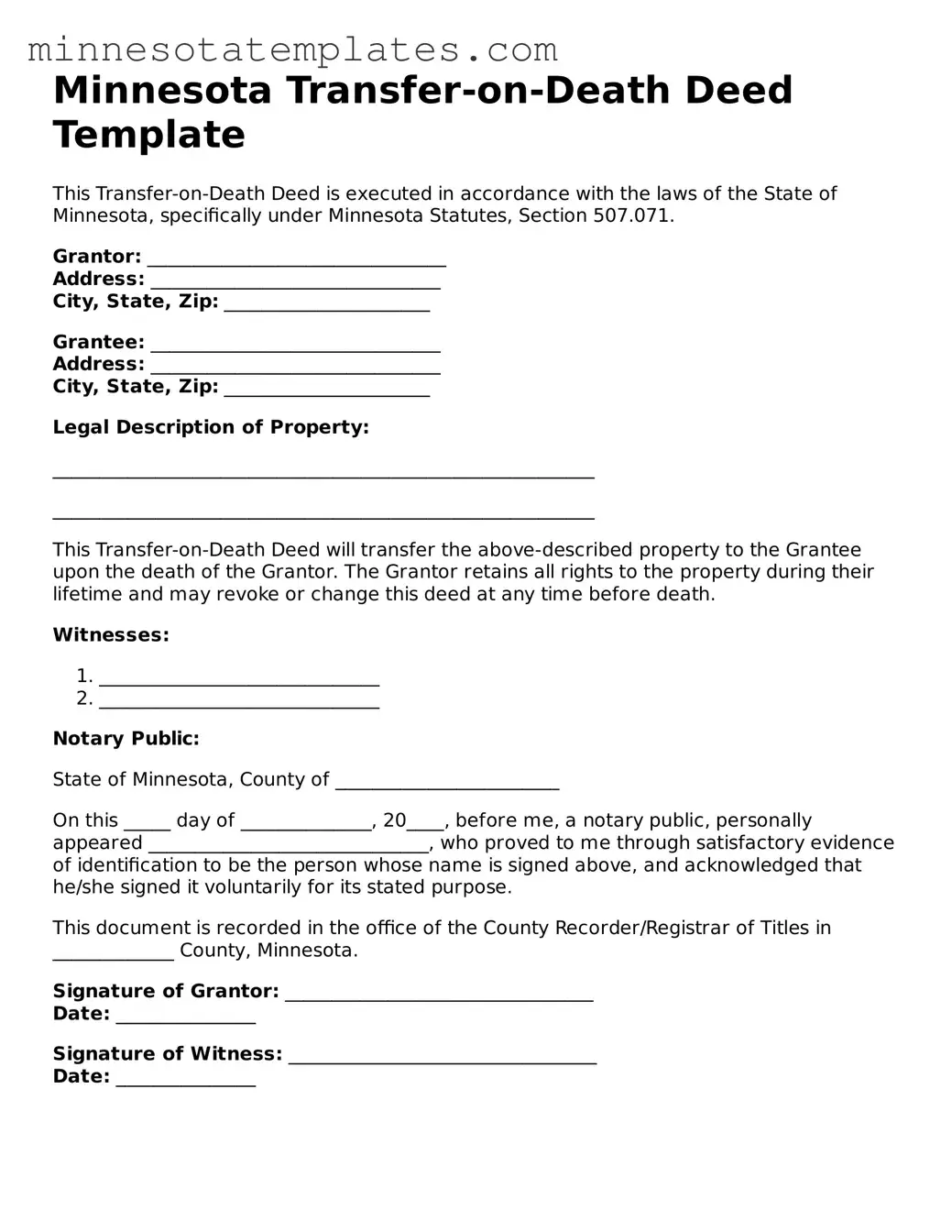The Minnesota Transfer-on-Death Deed form serves as a valuable estate planning tool, allowing individuals to transfer real estate to beneficiaries without the complexities of probate. This form provides a straightforward method for property owners to designate who will receive their property upon their passing, ensuring a smoother transition and preserving the value of the estate. By filling out this deed, property owners can maintain control over their assets during their lifetime while also simplifying the transfer process for their loved ones after death. Importantly, the Transfer-on-Death Deed does not take effect until the property owner passes away, meaning that the owner can change their mind or revoke the deed at any time before that point. This flexibility, combined with the potential to avoid probate, makes it an appealing option for many. Understanding the requirements and implications of this deed is crucial for anyone considering it as part of their estate planning strategy.
